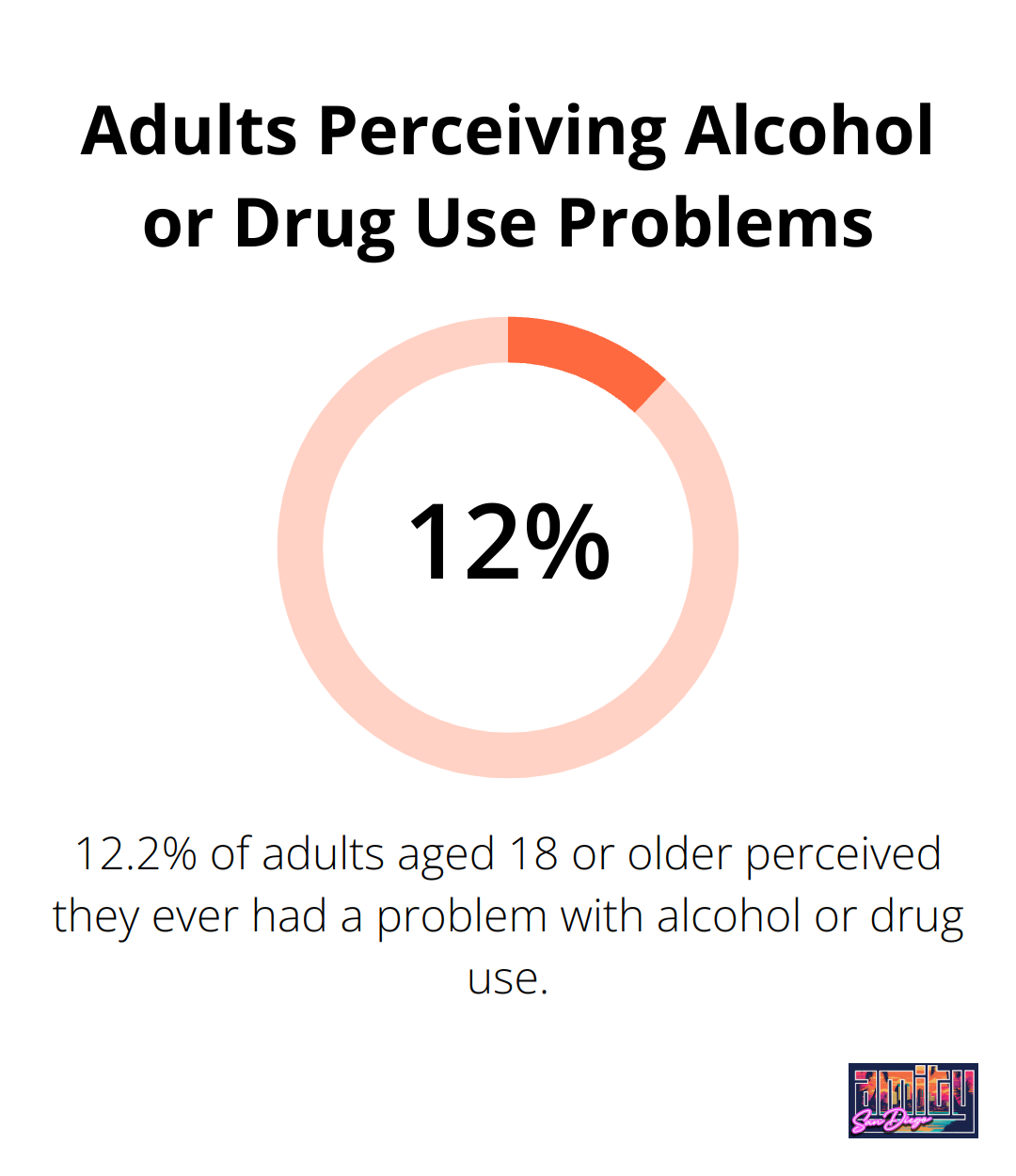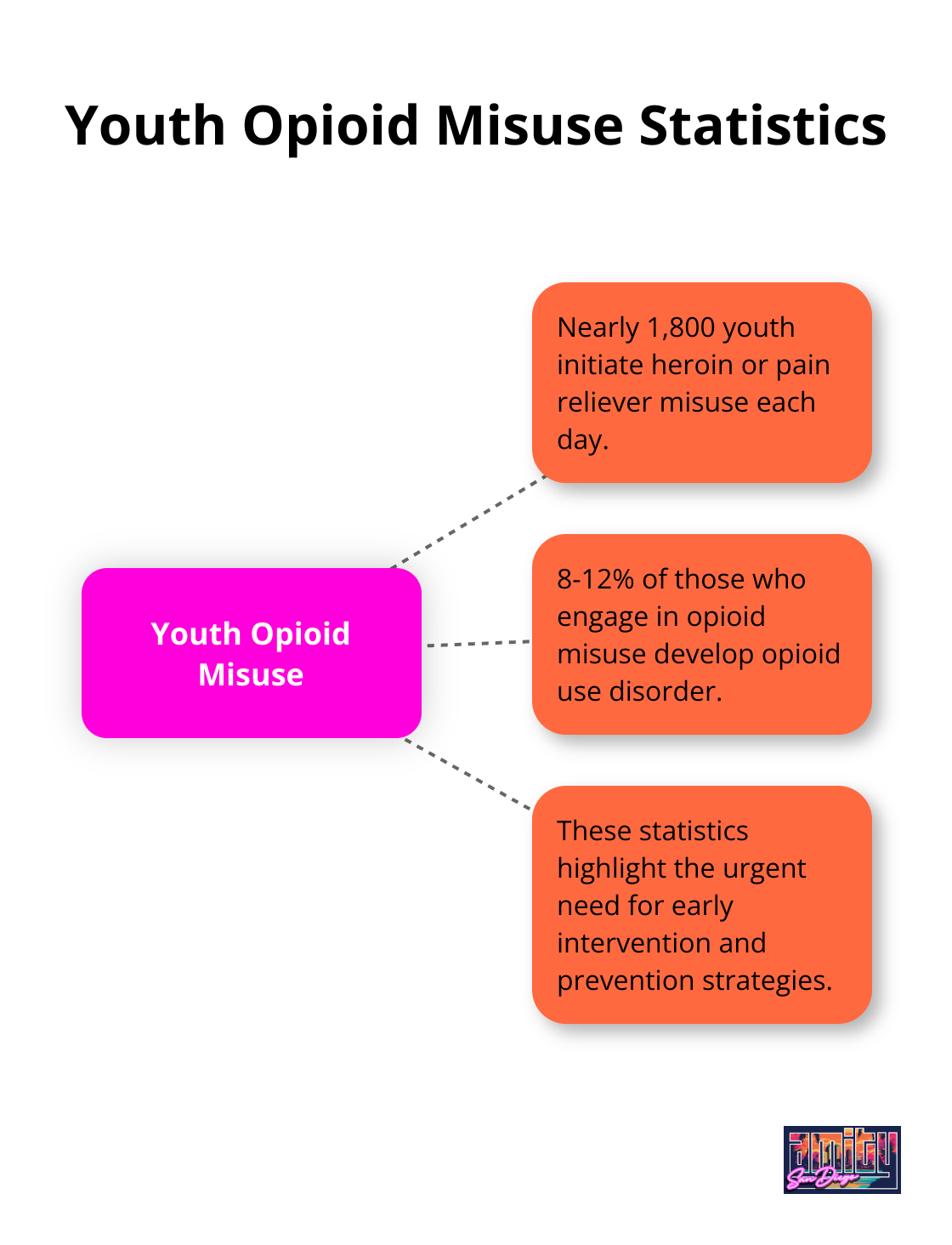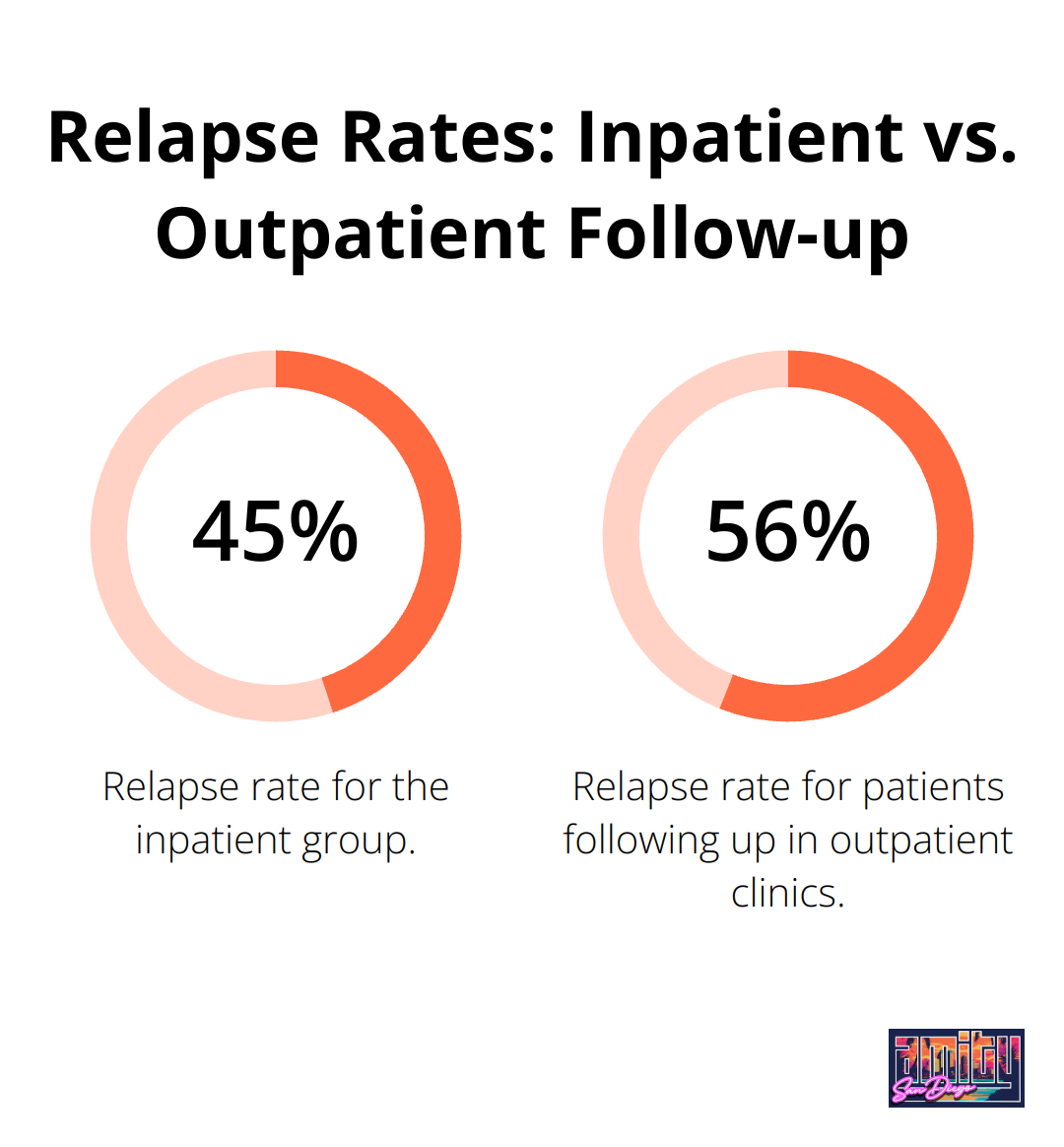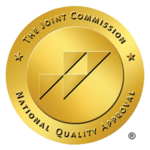At Amity San Diego, we understand the power of 28-day treatment programs in kickstarting recovery from addiction. These intensive, month-long interventions offer a structured approach to healing and personal growth.
28-day treatment programs provide a comprehensive foundation for individuals seeking to overcome substance abuse and build a healthier future. In this post, we’ll explore what these programs entail and how they can set you on the path to lasting recovery.
What Are 28-Day Treatment Programs?
The Essence of 28-Day Programs
28-day treatment programs offer intensive, structured interventions to kickstart recovery from substance use disorders. These programs begin with a thorough assessment to create a personalized treatment plan. Clients then participate in daily therapy sessions (both individual and group) to address the root causes of addiction. Educational workshops on topics like relapse prevention and stress management form key components of the program.
Medical Support and Holistic Approaches
Many 28-day programs provide medical support for managing withdrawal symptoms and co-occurring mental health conditions. They also incorporate holistic therapies such as yoga, meditation, and art therapy to promote overall well-being. This comprehensive approach (combining traditional and alternative methods) aims to treat the whole person, not just the addiction.
Benefits of a 28-Day Program
The structured environment of a 28-day program provides a crucial period of stability for individuals in early recovery. Research shows that treatments lasting 18 months or more have better results in reducing substance use. However, a 28-day program can serve as an excellent starting point, especially for those with work or family commitments.
Recent data from the Substance Abuse and Mental Health Services Administration (SAMHSA) shows that in 2024, 31.7 million adults aged 18 or older (or 12.2%) perceived that they ever had a problem with their use of alcohol or drugs. This highlights the importance of accessible treatment options like 28-day programs.

Effectiveness for Professionals
28-day programs prove particularly effective for professionals seeking discreet, focused treatment. The condensed timeframe allows for an intensive recovery work while minimizing disruption to career and personal life. This format appeals to individuals who need to address their addiction without extended absences from their responsibilities.
Transition to Long-Term Recovery
While a 28-day program provides a strong foundation, it’s important to view it as the first step in a longer journey. The next phase of treatment often involves transitioning to less intensive outpatient care or support groups. This gradual step-down approach helps individuals apply their newly acquired skills in real-world situations while still receiving support.
Addiction treatment San Diego options often include these types of programs, providing a crucial resource for those seeking recovery.
What Happens in a 28-Day Program?
Personalized Treatment Planning
At Amity San Diego, we start your recovery journey with a comprehensive assessment. Our clinical team evaluates your physical health, mental state, substance use history, and personal circumstances. This thorough process typically takes 1-2 days and forms the foundation of your personalized treatment plan.
Individualized treatment can work and recovery is possible. The key is remaining in treatment for the entire duration, which increases the chances of success.
Daily Structure and Activities
A typical day in our 28-day program follows a highly structured schedule to maximize your recovery potential. Here’s a glimpse into what your day might look like:
6:30 AM: Wake up7:00 AM: Breakfast8:00 AM: Morning meditation or light exercise9:00 AM – 12:00 PM: Group therapy sessions12:00 PM: Lunch1:00 PM – 3:00 PM: Individual therapy or educational workshops3:00 PM – 5:00 PM: Holistic activities (art therapy, yoga, etc.)5:30 PM: Dinner7:00 PM: 12-step meeting or support group9:00 PM: Personal reflection time10:00 PM: Lights out
This structure creates a sense of routine and stability, which are essential elements in early recovery.
Evidence-Based Therapies
Our program incorporates a variety of evidence-based therapies. Cognitive Behavioral Therapy (CBT) forms the cornerstone of our approach, helping you identify and change negative thought patterns. Dialectical Behavior Therapy (DBT) teaches mindfulness and emotional regulation skills.
Group therapy sessions occur daily, fostering peer support and shared learning. Individual therapy sessions (typically 2-3 times per week) allow for deeper exploration of personal issues.
Family therapy is another important component. Nearly 1,800 youth initiate heroin or pain reliever misuse each day, and 8–12% of those who engage in opioid misuse develop opioid use disorder.

Holistic and Complementary Treatments
We believe in treating the whole person, not just the addiction. Our program includes complementary therapies such as:
- Mindfulness meditation
- Yoga and fitness classes
- Nutritional counseling
- Art and music therapy
- Acupuncture
These holistic approaches help reduce stress, improve overall well-being, and provide healthy coping mechanisms for life after treatment.
Medical Support and Aftercare Planning
For clients with co-occurring mental health conditions, our program offers integrated treatment. This might include medication management under the supervision of our psychiatrists. We also provide ongoing medical monitoring to ensure your physical health throughout the program.
As you progress through the 28 days, we gradually shift focus towards relapse prevention and aftercare planning. You’ll work with your therapist to identify potential triggers and develop coping strategies. We’ll also connect you with local support groups and outpatient resources to ensure a smooth transition after program completion.
A 28-day program is intense, challenging, and transformative. It’s a significant step towards reclaiming your life from addiction. As we move forward, let’s explore what life looks like after completing a 28-day program and how to maintain the progress you’ve made.
Life After 28 Days: Sustaining Your Recovery Journey
Transitioning to Outpatient Care
Completion of a 28-day program marks a significant milestone, but it’s only the beginning of your recovery journey. Many individuals benefit from less intensive levels of care after initial treatment. Intensive Outpatient Programs (IOP) or Partial Hospitalization Programs (PHP) offer structured support while allowing reintegration into daily life. These programs typically involve 3-5 days of treatment per week, with sessions lasting 3-6 hours each day. Multiple randomized trials and naturalistic analyses have shown that IOPs have comparable outcomes to inpatient or residential care.
The Substance Abuse and Mental Health Services Administration (SAMHSA) reports that individuals who engage in outpatient treatment following inpatient care have significantly lower relapse rates. A study showed that the relapse rate was 45.33% in the inpatient group compared to 56% for patients following up in outpatient clinics.

Building Your Support Network
A strong support network is essential for maintaining sobriety. This network can include:
- Peer Support Groups: Regular attendance at 12-step meetings or alternative support groups like SMART Recovery provides ongoing encouragement and accountability.
- Individual Therapy: Continuation of one-on-one sessions with a therapist helps address underlying issues and develop coping strategies.
- Family and Friends: Education of loved ones about addiction and their involvement in your recovery process can create a supportive home environment.
- Alumni Programs: Many treatment centers offer alumni programs to keep you connected with peers who understand your journey.
Implementing Relapse Prevention Strategies
Relapse prevention requires vigilance and practice. Some effective strategies include:
- Trigger Identification: Work with your therapist to recognize people, places, or situations that might trigger cravings.
- Coping Skill Development: Learn and practice healthy ways to manage stress (such as mindfulness meditation or exercise).
- Daily Routine Creation: Structure your day to include recovery-focused activities, work, and self-care.
- Technology Utilization: Many apps now offer support for recovery. For example, the Sober Grid app connects you with nearby sober individuals and provides daily check-ins. It’s free to use, except for the peer recovery coaching features, which typically cost $99 per month after a two-week free trial.
- Continuous Education: Stay informed about addiction and recovery. Attend workshops or read literature to reinforce your commitment to sobriety.
Maintaining Long-Term Success
Recovery is a lifelong journey. While the intensity of treatment may decrease over time, maintenance of some level of engagement with recovery-focused activities is important for long-term success. Active participation in aftercare, construction of a strong support network, and implementation of relapse prevention strategies set a solid foundation for a fulfilling life in recovery.
At Amity San Diego, we emphasize the importance of a robust aftercare plan to maintain and build upon the progress you’ve made. Our team (consisting of experienced therapists and recovery specialists) works closely with you to create a personalized plan that addresses your unique needs and goals.
Final Thoughts
28-day treatment programs provide a powerful start to recovery, offering a structured environment for healing and growth. These intensive interventions transform lives by combining evidence-based therapies, medical support, and holistic treatments to address addiction comprehensively. The benefits extend beyond the initial month, laying a foundation for long-term recovery and equipping individuals with essential coping skills.
Recovery requires ongoing commitment and follow-through after completing a 28-day program. Aftercare services, support groups, and continued therapy enhance long-term outcomes significantly. The skills and insights gained during treatment must be applied consistently in daily life to maintain progress and prevent relapse.
We at Amity San Diego offer comprehensive outpatient addiction treatment services for those ready to take the next step. Our team of professionals provides personalized, evidence-based care in a supportive environment. Addiction treatment San Diego options can support you on your path to recovery, so take that first step today.



